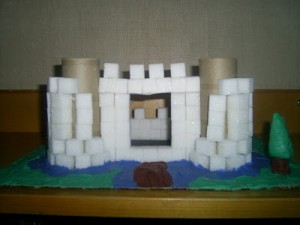 America is having a STEM crisis, I hear. There is great need for engineers and a dearth of qualified applicants, forcing employers to outsource, ramp up international recruitment or move. On the 2009 Programme for International Student Assessment (PISA), the US ranked 25th in math and 17th in science. A recent OECD study with Stanford University projected that a boost in PISA scores could translate to economic gains in the tens of trillions of dollars over the span of the students’ lifetime. But right now, these students are building sugar cube castles while their Asian, German and Scandinavian counterparts are using Lattice QCD to calculate the properties of hadrons. A year before the PISA rankings came out, President Obama announced that America needed more hadrons and less sugar. His “Educate to Innovate” campaign is pumping $260 million into STEM teaching programs and his Race to the Top fund provides financial incentives to states that commit to improving their STEM education efforts.
America is having a STEM crisis, I hear. There is great need for engineers and a dearth of qualified applicants, forcing employers to outsource, ramp up international recruitment or move. On the 2009 Programme for International Student Assessment (PISA), the US ranked 25th in math and 17th in science. A recent OECD study with Stanford University projected that a boost in PISA scores could translate to economic gains in the tens of trillions of dollars over the span of the students’ lifetime. But right now, these students are building sugar cube castles while their Asian, German and Scandinavian counterparts are using Lattice QCD to calculate the properties of hadrons. A year before the PISA rankings came out, President Obama announced that America needed more hadrons and less sugar. His “Educate to Innovate” campaign is pumping $260 million into STEM teaching programs and his Race to the Top fund provides financial incentives to states that commit to improving their STEM education efforts.
I think the president is right about the urgent necessity of fixing a failing system, but I don’t think more standardized testing and an influx of specialized teachers is the solution. Or rather, I think we need more teachers, but they should be teachers who love physics and English, biology and art, anthropology and philosophy. We need an education model based on what E.O. Wilson calls “consilience”: a unity of knowledge, a linking of facts and fact-based theory across disciplines. Why? Three reasons: communication, myopia and wider appeal[…]
Read the rest over atErin Stellato’s blog!
Share the post "STEM and the Third Culture: A Case for Interdisciplinary Education"
 Follow
Follow